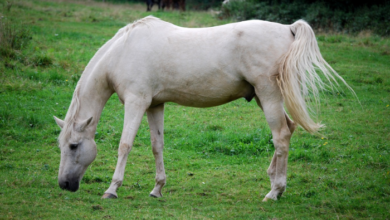
Horses have captivated human imagination for centuries with their grace, strength, and intelligence. To develop a meaningful relationship with these magnificent animals, it is essential to understand their behavior. This article delves into the intricacies of equine behavior, shedding light on their social structures, communication methods, and natural instincts. Explore a wide range of online courses on CasaCourses. Enhance your skills and knowledge with our diverse selection of educational programs.
Social Structure and Herd Dynamics
Horses are inherently social animals that thrive in herds. In the wild, their survival depends on the herd structure, which provides protection and social interaction. A typical herd consists of a dominant stallion, several mares, and their offspring. The stallion’s primary role is to protect the herd from predators and rival stallions, while the lead mare typically guides the group to food and water sources.
Understanding herd dynamics is crucial when managing domesticated horses. Horses naturally seek companionship and can become stressed or anxious when isolated. Providing a stable social environment, whether through regular interaction with other horses or consistent human companionship, is vital for their well-being.
Communication: Body Language and Vocalizations
Horses communicate primarily through body language, using a variety of signals to express their emotions and intentions. Some key aspects of equine body language include:
- Ears: Horses’ ears are highly expressive. Forward-facing ears indicate interest or curiosity, while pinned-back ears suggest anger or discomfort. Ears turned to the side may signify relaxation or boredom.
- Tail: A horse’s tail can reveal its mood. A relaxed, swinging tail indicates calmness, while a rapidly swishing tail may denote irritation. A tucked tail often signals fear or submission.
- Posture: The stance and movement of a horse convey significant information. A relaxed, grazing horse feels safe, whereas a tense, stiff posture can indicate anxiety or readiness to flee.
In addition to body language, horses use vocalizations to communicate. Whinnies, nickers, and snorts each have distinct meanings. A nicker, for example, is a soft, friendly sound often used to greet familiar individuals, while a loud whinny might signal distress or a call to other herd members.
Instinctual Behaviors
Horses possess several instinctual behaviors that stem from their evolution as prey animals. Recognizing and accommodating these instincts is essential for effective horse management:
- Flight Response: As prey animals, horses have a strong flight response to perceived threats. When frightened, their instinct is to flee rather than fight. Understanding this response helps handlers remain calm and patient when a horse becomes startled.
- Grazing: Horses are natural grazers, spending the majority of their day foraging for food. Providing ample grazing opportunities or frequent small meals can mimic their natural feeding habits, promoting both physical and mental health.
- Curiosity: Horses are inherently curious creatures. Introducing new objects and environments gradually allows them to explore and acclimate without becoming overwhelmed.
Training and Behavior Modification
Effective horse training relies on an understanding of equine behavior. Positive reinforcement, consistency, and patience are key components of successful training. Horses respond well to clear, consistent signals and rewards, which help them understand desired behaviors.
Building trust is fundamental. Horses are more likely to cooperate and perform well when they trust their handlers. Spending time building a rapport through grooming, groundwork, and gentle handling creates a strong foundation for training.
Conclusion
Understanding equine behavior is a fascinating journey into the world of horses. By recognizing their social structures, communication methods, and natural instincts, we can forge stronger bonds and create healthier, happier environments for these incredible animals. Whether you are a seasoned equestrian or a new horse enthusiast, delving into the complexities of equine behavior enhances the experience of working with and caring for horses, fostering a deeper appreciation for their unique qualities.




